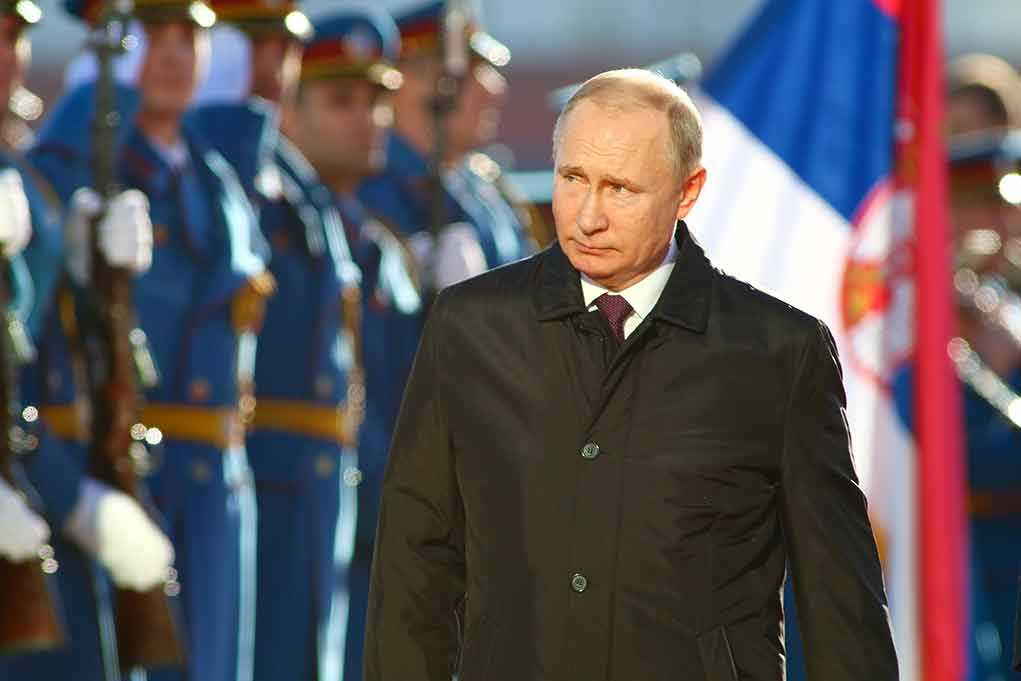
Russia moves to secure a 300,000-ton wheat deal with the Philippines, challenging US agricultural dominance in Southeast Asia as global wheat supplies remain uncertain.
Key Takeaways
- Russia is negotiating to supply 200,000 to 300,000 metric tons of wheat to the Philippines, marking its second attempt to enter the market of the world’s eighth-largest wheat importer.
- The Philippines currently relies on the United States, Australia, and Brazil for most of its wheat imports, making this potential Russian deal a significant shift in its supply chain.
- Global wheat supplies are experiencing temporary relief in 2024-2025, but concerns remain for 2025-2026 due to potential poor harvests in Russia and Ukraine, which together account for about 30% of global wheat exports.
- This agreement could strengthen Russia’s position in Asian agricultural markets despite Western sanctions and establish new economic ties between Moscow and Manila.
Russia’s Strategic Push into the Philippine Wheat Market
Russia’s negotiations to supply up to 300,000 metric tons of wheat to the Philippines represent a significant strategic move in global agricultural trade. This deal would mark Russia’s second attempt to gain a foothold in the Philippine market, which ranks as the world’s eighth-largest wheat importer. The timing is particularly strategic as the agreement would coincide with the new marketing season beginning July 1, potentially disrupting the Philippines’ traditional supply chains, which have historically favored Western allies and regional powers like the United States, Australia, and Brazil.
“If we can find a compromise regarding the new harvest, we can expect deliveries of 200,000–300,000 tons in the first year,” said Eduard Zernin, a member of Russia’s negotiating delegation.
For Moscow, successfully penetrating the Philippine market would represent a significant victory for its agricultural export strategy, which has become increasingly important amidst Western economic sanctions. The agreement would demonstrate Russia’s continued ability to forge new economic partnerships despite attempts to isolate it economically, while simultaneously expanding its influence in Southeast Asia. For the Philippines, diversifying wheat suppliers could provide greater food security and potentially more favorable pricing, particularly important for a nation heavily dependent on imported wheat.
Global Wheat Supply Dynamics
The timing of Russia’s wheat export push coincides with shifting dynamics in global wheat supply projections. Recent updates from the USDA have slightly eased concerns about a severe global wheat shortage in 2024-2025. Initially projected to hit a 17-year low, the global wheat stocks-to-use ratio has been revised upward to 15.89%. However, this figure remains below the longer-term average of above 18%, indicating continued tightness in the market that could benefit major exporters like Russia, which have wheat available for sale.
“USDA’s Kyiv attache last week pegged the 2025-2026 Ukrainian wheat harvest at 17.9 million tonnes, a 13-year low and down 23% on the year,” noted the USDA’s Kyiv attache.
Russia and Ukraine together account for approximately 30% of global wheat exports, making their production levels critically important to world food security. While Russian wheat exports reached record volumes in 2022-2023 and 2023-2024 despite claims of export hindrance, the outlook for 2025-2026 production in both countries raises concerns. Ukrainian wheat production is projected to plummet to a 13-year low, down 23% year-over-year, largely due to the ongoing conflict that has disrupted farming in key agricultural regions.
Implications for Global Food Security
The Russia-Philippines wheat agreement highlights the increasing complexity of global food security in an era of geopolitical tensions. With Russia and Ukraine accounting for nearly a third of global wheat exports, any shifts in their production or export patterns have significant ripple effects throughout global markets. The Philippines, with its high dependency on imported wheat, is particularly vulnerable to these market fluctuations, making the potential Russian supply agreement an important food security measure.
“Russian agencies currently predict the 2025-2026 harvest between 79.7 million and 82.5 million tonnes, the latter of which is similar to a year ago,” reported Russian agencies.
While traditional wheat exporters like the United States are seeing decreased plantings, with U.S. wheat plantings for 2025-2026 set to decrease to a 55-year low for high-protein spring wheat, other major exporters are facing mixed prospects. Argentina could potentially harvest a record wheat crop if export tax cuts are extended, while Canadian farmers plan to increase wheat acreage. Meanwhile, Australian production may decrease by 16% due to dry conditions, and EU soft wheat yields are expected to rise by 8% from last year.
Economic and Diplomatic Significance
Beyond its immediate agricultural implications, the Russia-Philippines wheat agreement represents a notable diplomatic breakthrough for Moscow in Southeast Asia. The deal demonstrates Russia’s continued ability to forge economic partnerships despite Western attempts at isolation and sanctions. For the Philippines, the agreement offers an opportunity to diversify its wheat sources beyond traditional suppliers while potentially securing more favorable pricing arrangements, a significant consideration given the country’s economic challenges and food security concerns.
The agreement also showcases President Trump’s influence on global trade dynamics, as his administration’s emphasis on bilateral trade relationships and skepticism of traditional alliances has created space for countries like Russia to expand their economic footprint in regions previously dominated by American influence. As global wheat supplies remain uncertain heading into 2026, this deal positions both Russia and the Philippines to better navigate potential market volatility while strengthening their bilateral economic ties.















